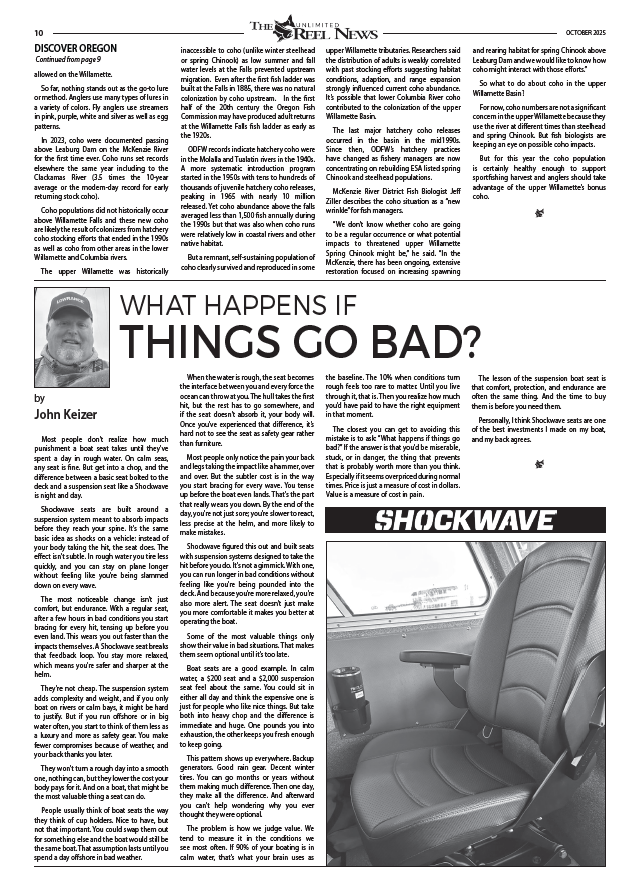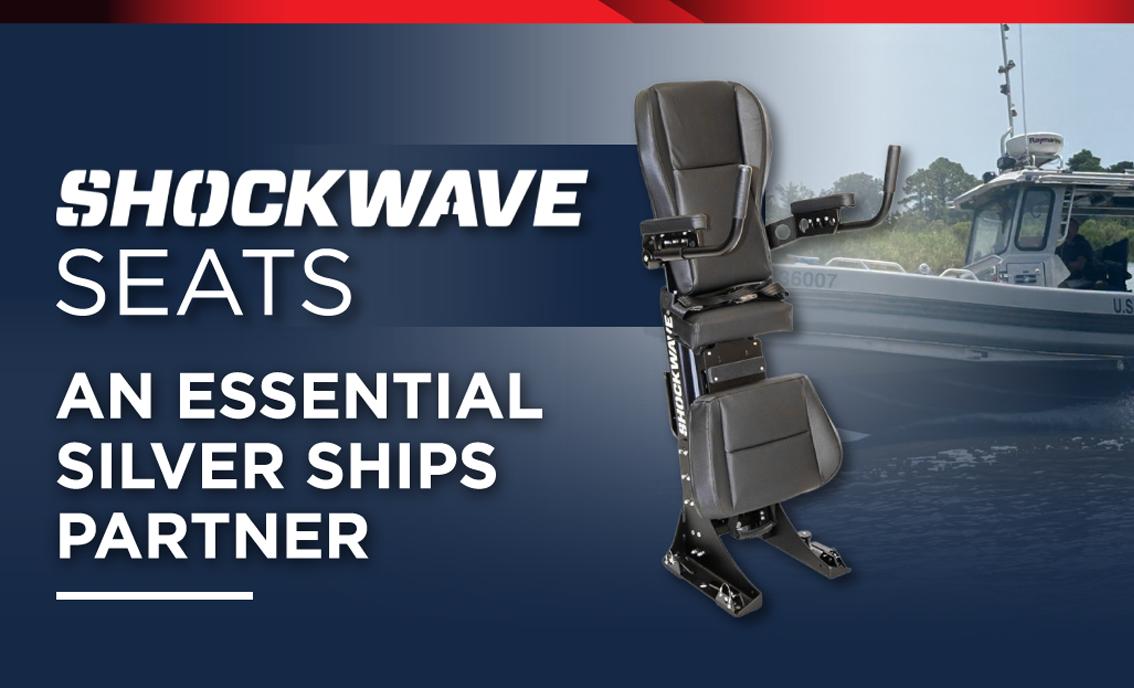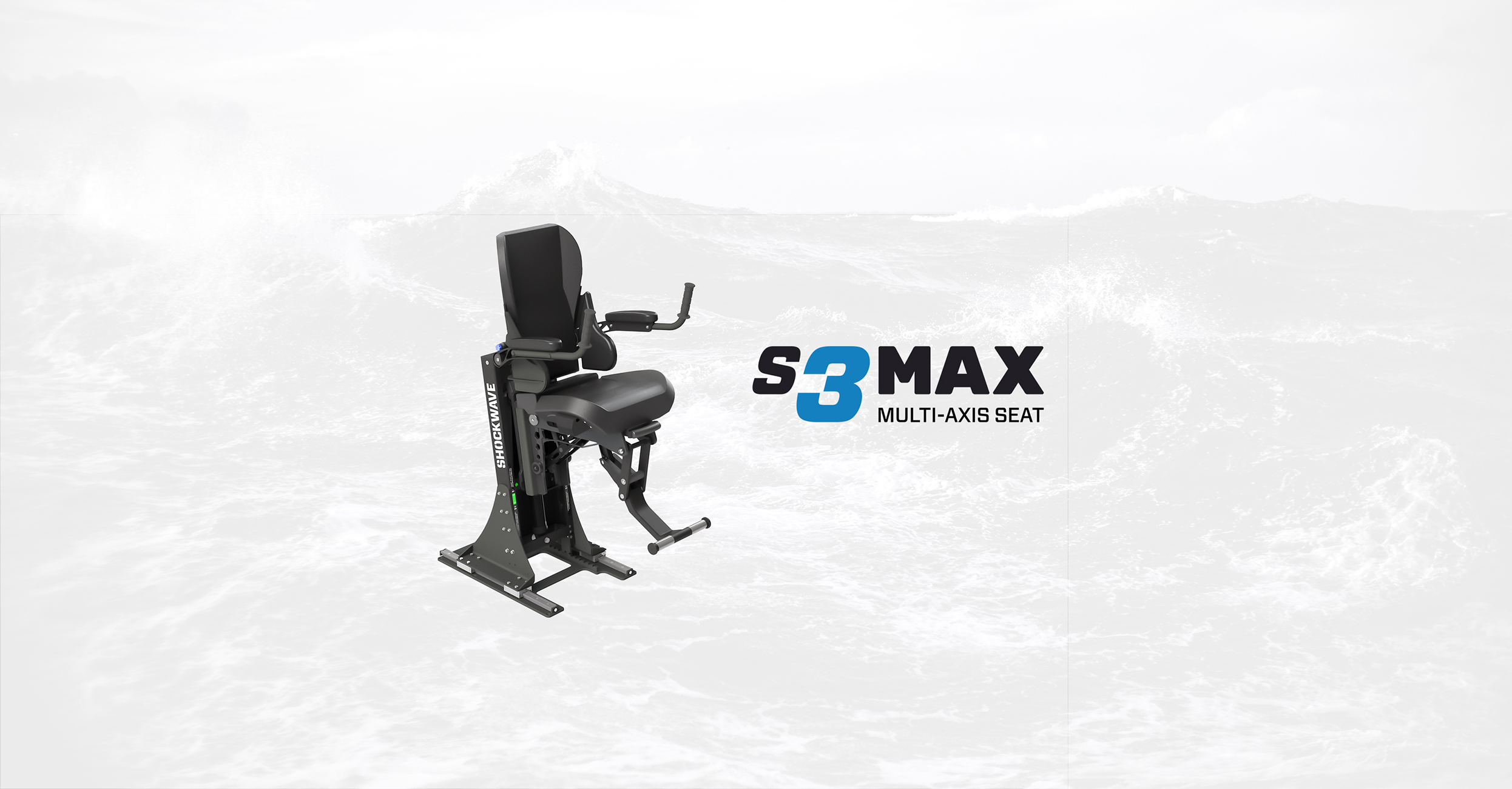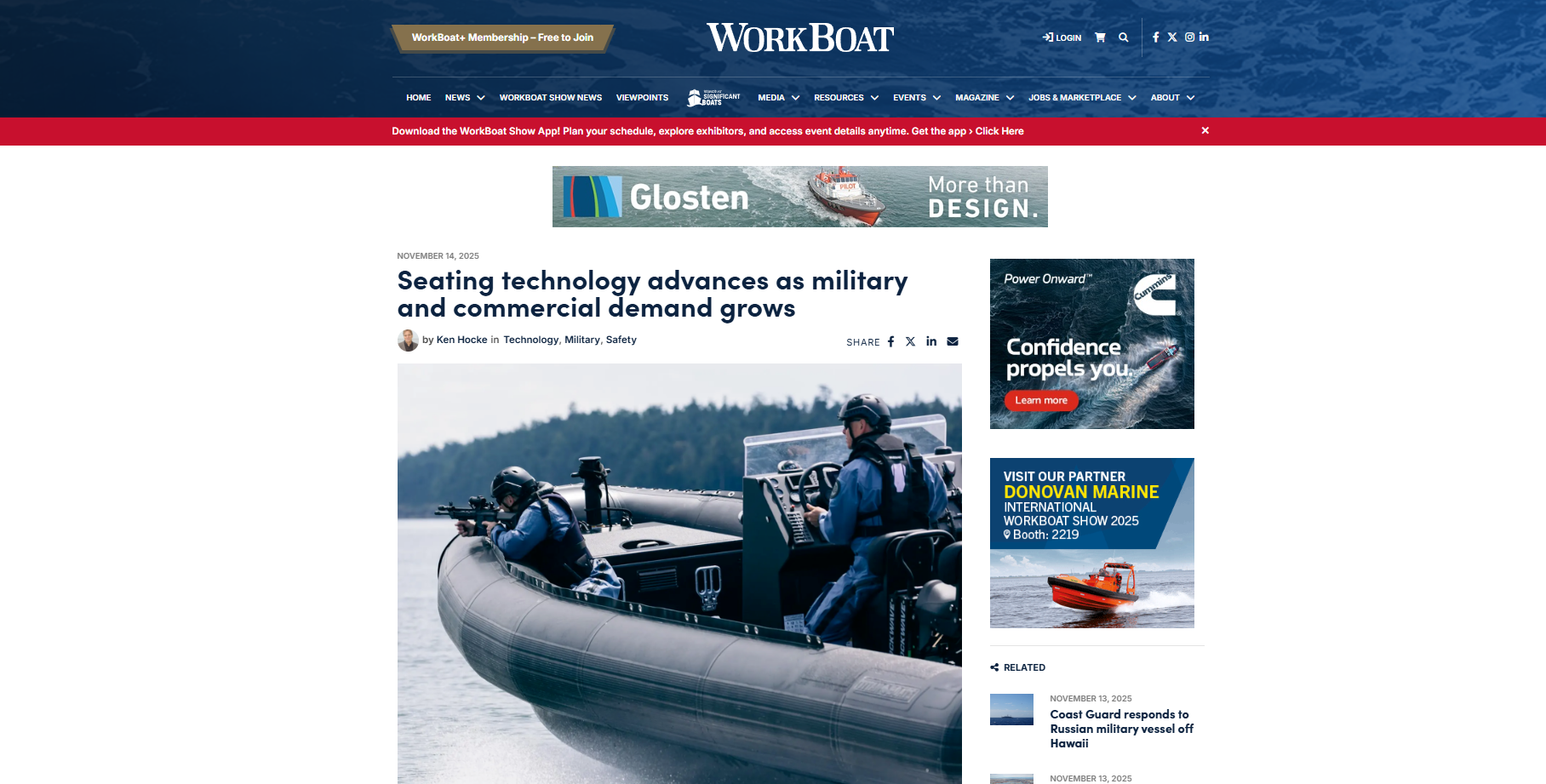The Reel News - October 2025
WHAT HAPPENS IF THINGS GO BAD?
by John Keizer
Most people don’t realize how much punishment a boat seat takes until they’ve spent a day in rough water. On calm seas, any seat is fine. But get into a chop, and the difference between a basic seat bolted to the deck and a suspension seat like a Shockwave is night and day.
Shockwave seats are built around a suspension system meant to absorb impacts before they reach your spine. It’s the same basic idea as shocks on a vehicle: instead of your body taking the hit, the seat does. The
effect isn’t subtle. In rough water you tire less quickly, and you can stay on plane longer without feeling like you’re being slammed down on every wave.
The most noticeable change isn’t just comfort, but endurance. With a regular seat, after a few hours in bad conditions you start bracing for every hit, tensing up before you even land. This wears you out faster than the impacts themselves. A Shockwave seat breaks that feedback loop. You stay more relaxed, which means you’re safer and sharper at the helm.
They’re not cheap. The suspension system adds complexity and weight, and if you only boat on rivers or calm bays, it might be hard to justify. But if you run offshore or in big water often, you start to think of them less as a luxury and more as safety gear. You make fewer compromises because of weather, and
your back thanks you later.
They won’t turn a rough day into a smooth one, nothing can, but they lower the cost your body pays for it. And on a boat, that might be the most valuable thing a seat can do.
People usually think of boat seats the way they think of cup holders. Nice to have, but not that important. You could swap them out for something else and the boat would still be the same boat. That assumption lasts until you spend a day offshore in bad weather.
When the water is rough, the seat becomes the interface between you and every force the ocean can throw at you. The hull takes the first hit, but the rest has to go somewhere, and if the seat doesn’t absorb it, your body will. Once you’ve experienced that difference, it’s hard not to see the seat as safety gear rather than furniture.
Most people only notice the pain your back and legs taking the impact like a hammer, over and over. But the subtler cost is in the way you start bracing for every wave. You tense up before the boat even lands. That’s the part that really wears you down. By the end of the day, you’re not just sore; you’re slower to react, less precise at the helm, and more likely to make mistakes.
Shockwave figured this out and built seats with suspension systems designed to take the hit before you do. It’s not a gimmick. With one, you can run longer in bad conditions without feeling like you’re being pounded into the deck. And because you’re more relaxed, you’re also more alert. The seat doesn’t just make you more comfortable it makes you better at operating the boat.
Some of the most valuable things only show their value in bad situations. That makes them seem optional until it’s too late.
Boat seats are a good example. In calm water, a $200 seat and a $2,000 suspension seat feel about the same. You could sit in either all day and think the expensive one is just for people who like nice things. But take both into heavy chop and the difference is immediate and huge. One pounds you into exhaustion, the other keeps you fresh enough to keep going.
This pattern shows up everywhere. Backup generators. Good rain gear. Decent winter tires. You can go months or years without them making much difference. Then one day, they make all the difference. And afterward you can’t help wondering why you ever thought they were optional.
The problem is how we judge value. We tend to measure it in the conditions we see most often. If 90% of your boating is in calm water, that’s what your brain uses as the baseline. The 10% when conditions turn rough feels too rare to matter. Until you live through it, that is. Then you realize how much you’d have paid to have the right equipment in that moment.
The closest you can get to avoiding this mistake is to ask: “What happens if things go bad?” If the answer is that you’d be miserable, stuck, or in danger, the thing that prevents that is probably worth more than you think. Especially if it seems overpriced during normal times. Price is just a measure of cost in dollars.
Value is a measure of cost in pain.
The lesson of the suspension boat seat is that comfort, protection, and endurance are often the same thing. And the time to buy them is before you need them.
Personally, I think Shockwave seats are one of the best investments I made on my boat, and my back agrees.



